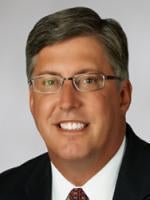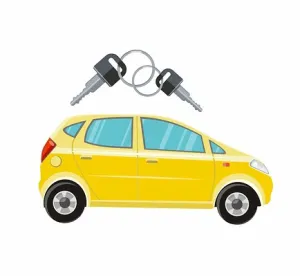“A [not so] long time ago in an automotive industry [not] far, far away,” John Murphy, Research Analyst for Merrill Lynch delivered his popular annual “Car Wars” presentation in Detroit on May 10th. This was the 26th year of the report (which began in 1991), which is not quite as old as the 39-year old Star Wars franchise that dates back to 1977. But, for automotive geeks, both remain very interesting.
Report Summary
The Car Wars report included Murphy’s forecast for U.S. automotive industry sales, and of course the information regarding the automotive OEMs current product plans and replacement rates for the 2017-2000 period, which portion gives the report its signature name. On the market forecast, the headline of course was the prediction of 20 million total units sold by 2018 in the U.S. market, which would be a significant uptick from the current sales rate of between 17 and 18 million units. Garnering less attention was Murphy’s prediction of a more “normal” downturn in a cyclical industry beginning sometime after 2018, that he projects would bottom out at 14 million units in 2026 (a far cry from 2009-2010’s bottom but still down 30% projected peak to trough).
One of the drivers behind this optimistic projection (higher than most forecasts) is the higher number of new models that will be coming on line during the 2017-2020 period, which are forecast to average 58 new models per year during the period vs. a current average of about 38 new models per year. This includes a projected 70 new models in 2019 and 68 new models in 2020. Murphy notes that “suppliers are likely to benefit from the convergence of product cycles as OEMs turn to them for differentiated content and features,” as well as dealers who will have consumers drawn into their showrooms with a broad stream of new products.
By Murphy’s reckoning, there will be approximately 3.2 trillion total miles driven this year in the U.S. With a range of 200,000 miles for the lifetime of an average car, that would mean a natural “replacement” rate of 16 million cars per year as a base growth rate, with incremental growth coming on top of that. Moreover, Murphy is bullish on the impact (down the line a ways) of fully autonomous driving and changes in mobility patterns, if they mean that more drivers will be in the market (e.g. younger kids and older seniors) and hence more total miles will be “driven,” thereby requiring additional vehicle production.
Impact on OEMs
For his “Car Wars” analysis, Murphy believes that OEMs with the highest replacement rates (the percentage of an OEM’s sales volume that is replaced annually) will have the freshest fleet in their dealers’ showrooms, and given the right mix of products will garner additional sales, market share and stock price as a result. Over the 2017-2020 forecast period, he predicts an average replacement rate of 81% (20%+ per year), with GM (88%, driven by crossovers and light trucks), Ford (86%, driven by light trucks), Honda (85%, driven by mid/large cars and small cars), and FCA (84%, driven heavily by light trucks) outpacing that projected average performance; and with Toyota (79%, driven by mid/large cars), Nissan (76%, driven by mid/large cars and small cars), the Korean OEMs (76%, driven heavily by the shrinking small car market) and European OEMs (70%, driven by the luxury segment) below the projected industry average replacement rate. This results in part in projected market share increases in CY19 vs. CY15 for GM, Ford and Honda, a projected flat market share for FCA, Toyota and Nissan and a lower projected market share for the Korean and German OEMs, according to Murphy. And, even though its current product lineup is a bit long in the tooth, he praised Honda’s product planning function as one that Ford and others benchmark themselves against.
In assessing FCA’s product plans, which are aggressive, he questioned whether adequate free cash flow will be available to fund its projected replacement rate, which may be one reason contributing to FCA’s CEO’s openly articulated desire to team up with another OEM as a way to fund operations and growth.




 />i
/>i
